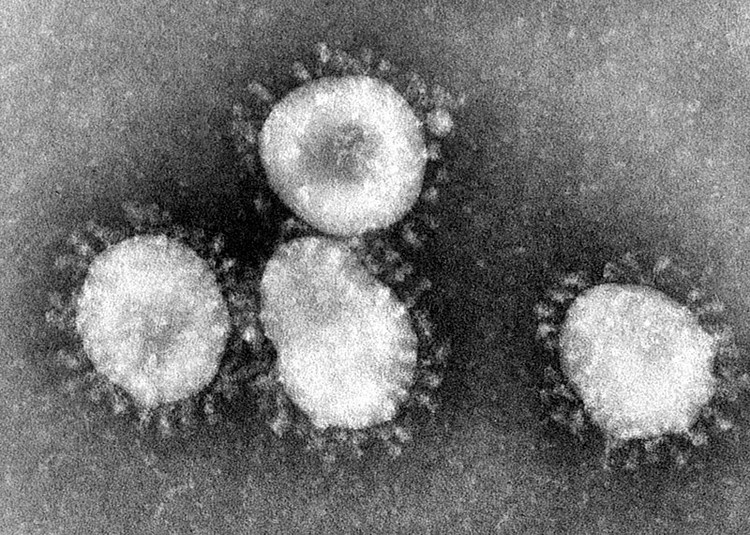
Coronaviruses as seen under an electron microscope. Photo: Dr. Fred Murphy (CDC), via Wikipedia (public domain)
27 January 2020
The National Institute for Communicable Diseases has put in place systems to rapidly identify cases of the coronavirus (2019-nCoV) in South Africa.
Together with the National Department of Health the NICD has developed and distributed clinical guidelines and case definitions for doctors and nurses in both the public and the private sectors to better detect, identify and respond to a possible case.
These include guidance on what samples to collect to confirm the diagnosis, as well as how to best manage the case clinically and to prevent spread to others while the diagnosis is being made.
There are several additional resources on standby to enhance optimal response including placing the Emergency Operations Centre in alert mode, to be activated should the need arise.
Furthermore, South Africa has in place fever screening at ports of entry, and guidance documents including case definitions. Staff at ports have been given information on what to do should a suspected case be identified.
The Department of Health has assured the public that measures are in place to detect, manage and contain any cases of the new coronavirus should it come to our shores.
“Port health professionals routinely conduct temperature screening for all international travellers. Fortunately, OR Tambo International Airport is the only port of entry for all flights from Asia.”
The department says all provinces have activated outbreak response teams and are on high alert to detect and manage cases that may arrive in the country.
Professor Cheryl Cohen of the NICD told GroundUp late on Monday afternoon: “To date there has been no case in South Africa. In the event that a case is identified, we have systems in place to identify and manage the case to avoid further spread. To assist, people who have travelled to China and who have respiratory illness within 14 days of travel, should contact their doctors and share their travel history.”
Explaining the difference between Middle East respiratory syndrome coronavirus (MERS), severe acute respiratory syndrome coronavirus (SARS) and this new coronavirus, Cohen said MERS and SARS come from the same family called beta corona viruses, which cause a wide range of clinical presentations. They are zoonotic, meaning an infection from animals to humans: MERS came from camels and SARS from civet cats. The current coronavirus source has not yet not been confirmed. From data currently available at the moment, this one is milder than the other two.
“This virus invades the lungs and causes them to swell, blocking your flow of oxygen. Information on the full spectrum of the clinical disease is still limited . However, to date, most cases have a link to a market in Wuhan. Cases who presented with severe illness had underlying medical conditions and were elderly [people],” she said.
The World Health Organisation (WHO) latest situation report issued on Sunday, states there have been 2,014 confirmed cases since the first one on 31 of December in Wuhan City in the Hubei province of China. Seven days later it was identified as a novel coronavirus.
But since then the number have risen and nearly 2,800 cases have been confirmed with 80 deaths. Some 60 million people across China are in lockdown as the Chinese government tries to control the spread. Yet there are 50 confirmed cases in 13 places outside China, including France and America according to CNN.
According to an article in the prestigious medical journal The Lancet, most coronavirus infections are mild; less than 3% of confirmed cases have resulted in death so far.
This contrasts with SARS and MERS. There have been more than 10,000 cases of these in the past two decades, with mortality rates of 10% for SARS and 37% for MERS.
“The coronaviruses already identified might only be the tip of the iceberg, with potentially more novel and severe zoonotic events to be revealed,” according to the article.
Although the death rate from the new virus is much lower than SARS, it is too early to dismiss it as less of a worldwide threat. Reports from China indicate that people can transmit the virus before they are symptomatic. This is like influenza but unlike SARS. This makes it a very difficult infectious disease to contain.